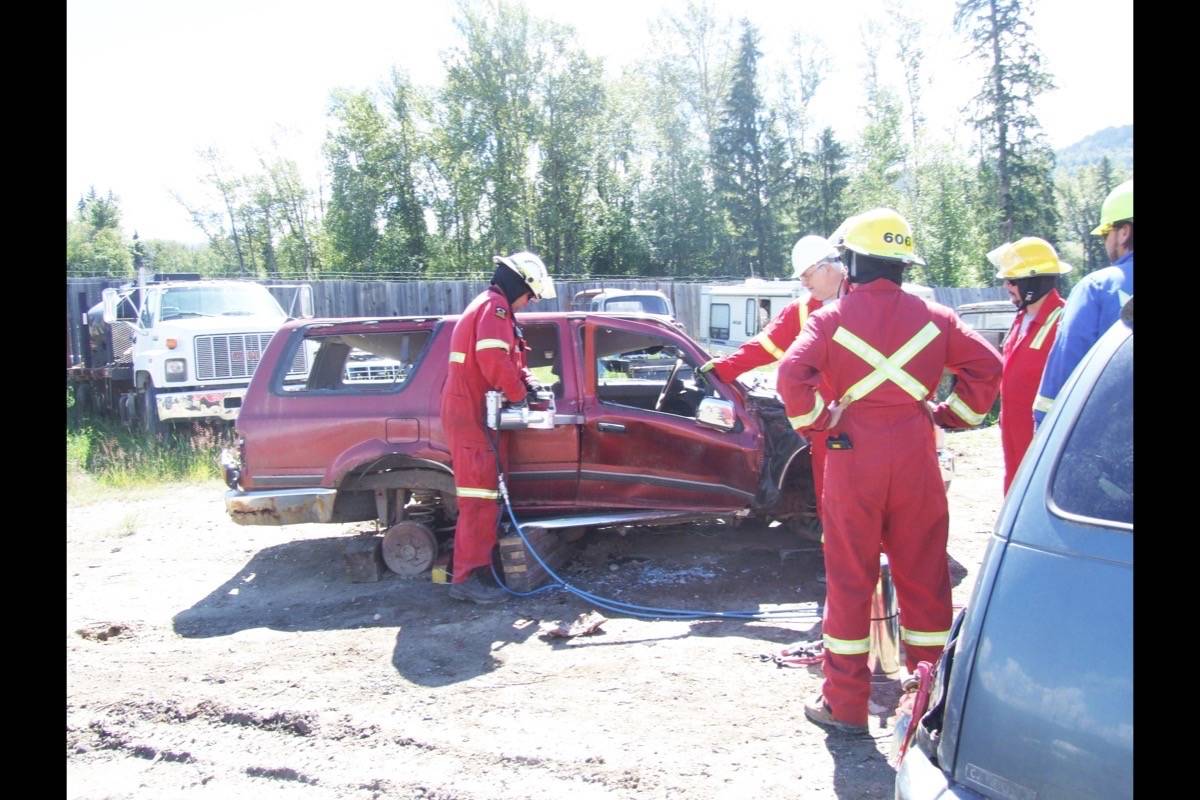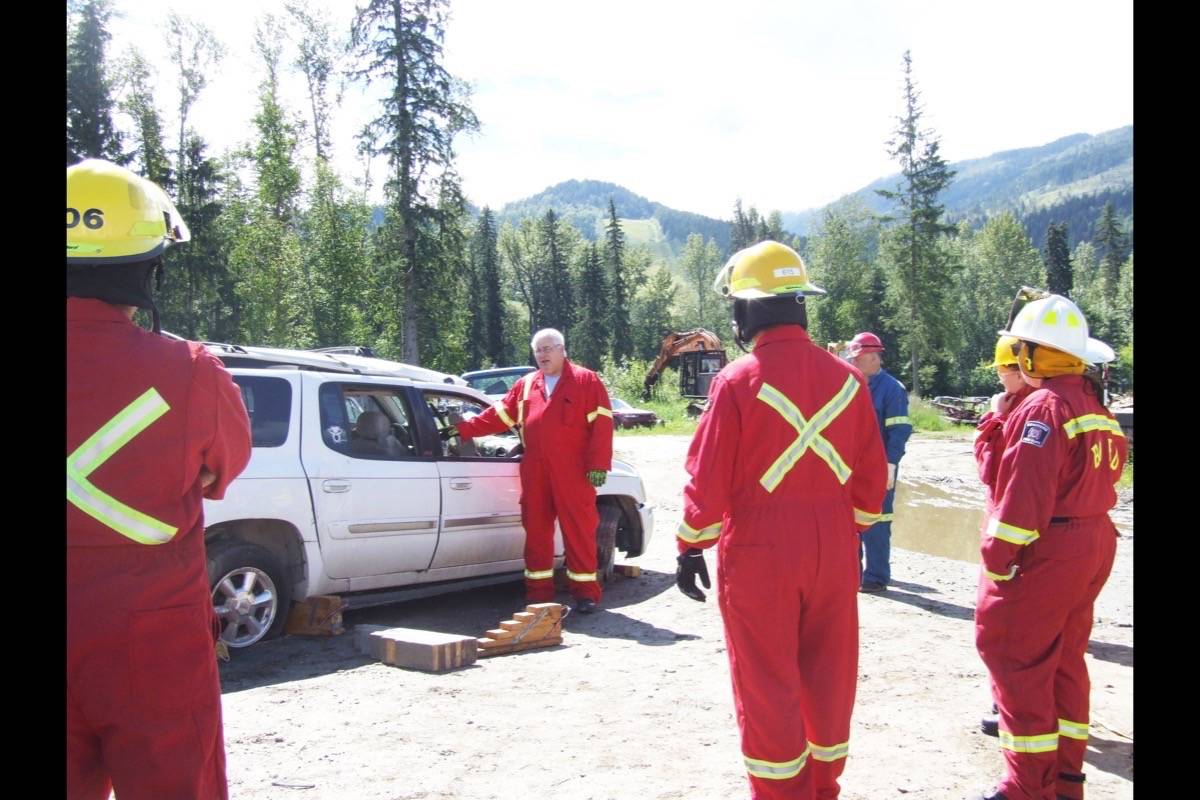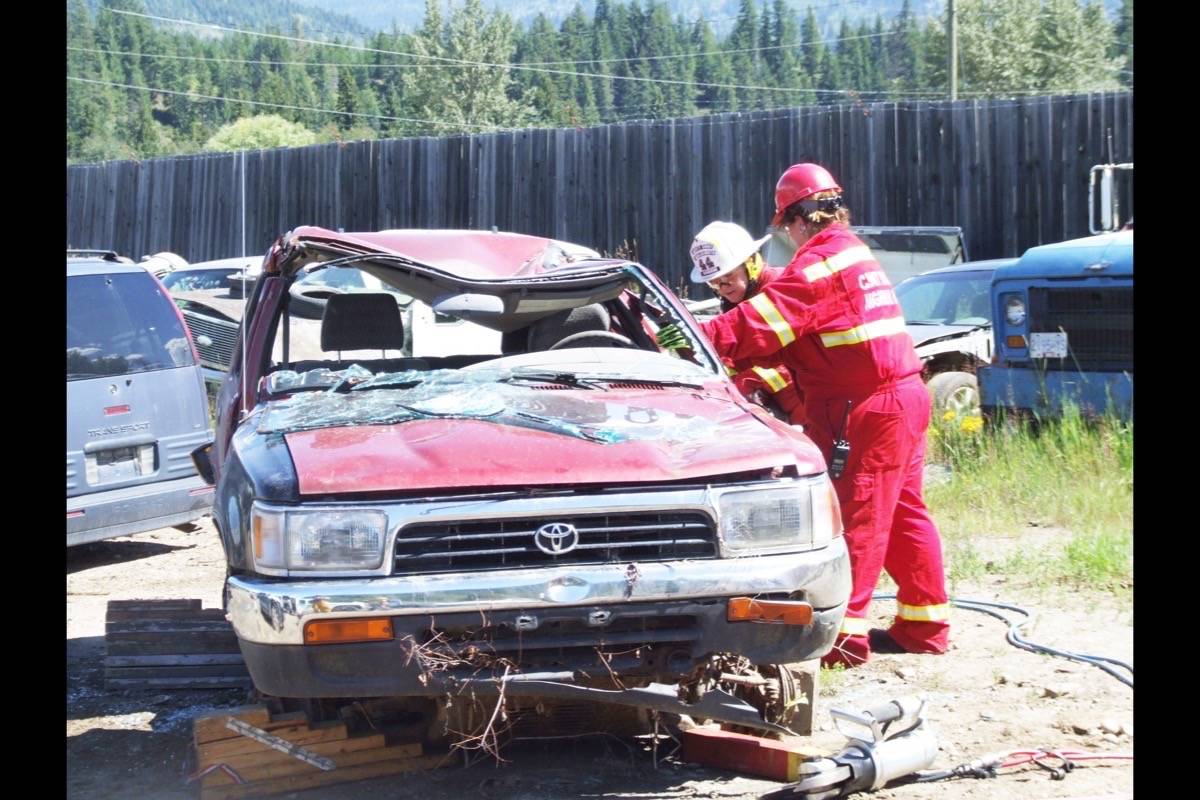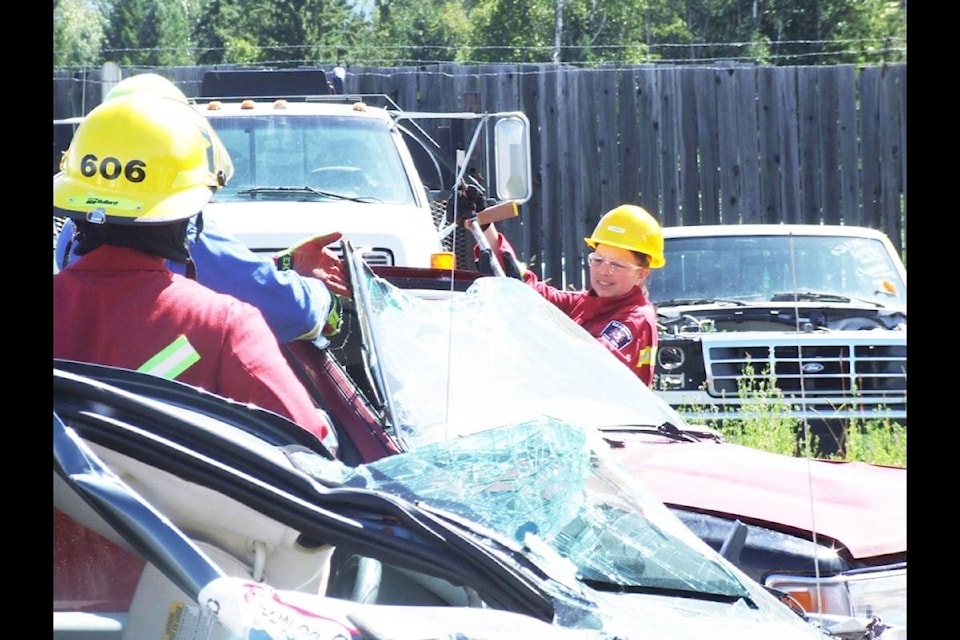By Jaime Polmateer
Clearwater and District Roadside Rescue (CDRR) recently held an automobile extrication training day, where participants from local fire departments and emergency services learned the basics of roadside emergency scene management.
Road Rescue Units from Blue River, Barriere, Blackpool, Clearwater and Vavenby attended the all-day session.
“Scene stabilization, vehicle and patient stabilization and access to patients with a multitude of different extrication techniques—being it a door removal, a roof removal, going through the trunk or vehicles on their side, that sort of thing,” said Mike Savage, deputy unit chief for Highway Rescue and training coordinator.
Savage added CDRR tries to hold two of these training days a year, considering them major events in terms of keeping responders skills sharp, with Clearwater Towing offering up its property to hold the event this time around, and even donating half a dozen wrecked vehicles for participants to cut apart.
“It’s always nice to get that community buy-in to support the training of the volunteers,” Savage said.
Roughly 20 people took part in last weekend’s event, which served as an introduction to auto extrication for those new to the team, and a refresher to those more familiar with it.
This kind of training is ongoing, said Savage, and for people who are less familiar, it gives them hands-on experience with different equipment and techniques, teaching how to use the tools of the trade on actual damaged vehicles, so when a real roadside emergency is attended, there are fewer surprises.
For more seasoned participants, the day helps improve techniques and protocols that may have been learned at past training events, keeping skills honed and responders capable.
Some of the areas that were touched upon involved approaching and controlling a scene, de-energizing airbags and assessing the threat of a fire.
“Many of the accident scenes we go to now, with the new technologies and some of the mechanisms of the crash, the electrical components are easily damaged and short out,” Savage said.
“Couple that with any flammable substances, whether it be the fuel on the vehicle or the components within the vehicle, they ignite rather easily and being able to mitigate that risk for the victims and the responders ensures that everybody comes home safe.”
Teams were made up of one candidate from each agency represented, so everyone involved was working with someone new and all with varying skills levels.
Each team had an experienced extrication member and were monitored by the lead instructor.
Eight different emergency scenarios were undertaken by the teams, which rotated positions so everyone had time with each of the rescue tools.
Savage said there is enough gear provided to do two emergency scenarios at a time, including two sets of jaws, power packs and two sets of cutters.
“We could do two to four vehicles at a crack, which means a lot of manpower and a lot of work,” he added.
“It’s a volunteer service that’s provided to the community; the volunteers don’t get paid for what they do and it’s an important service that’s offered, community leaders need to know it’s valuable and needs to remain.”



